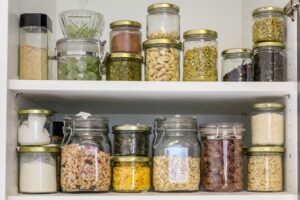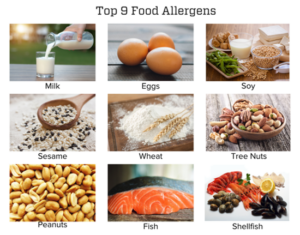 Hidden Food Allergen Dangers in Your Kitchen
Hidden Food Allergen Dangers in Your Kitchen
The kitchen is a place of warmth and creativity, where meals are prepared, and family and friends gather. However, for those with food allergies, the kitchen can also be a hazardous place.
Cross-contact/contamination is a critical issue, where trace amounts of allergens are inadvertently transferred from one food to another. This can lead to severe allergic reactions, with potentially life-threatening consequences. In this article, we explore why preventing food allergy cross-contact in the kitchen is crucial and provide some strategies to help you safeguard your cooking space.
Food Allergies: The Growing Concern 
Food allergies affect millions of people worldwide. According to the Centers for Disease Control and Prevention (CDC), food allergies among children in the United States increased by 50% between 1997 and 2011. Currently, about 1 in 13 children in the U.S. has a food allergy. This means that, statistically, there is at least one child with food allergies in every classroom.
For adults, the numbers are equally concerning. Approximately 32 million Americans have food allergies, according to Food Allergy Research & Education (FARE). These allergies can range from mild to severe, with symptoms including hives, swelling, difficulty breathing, and anaphylaxis—a potentially life-threatening reaction that requires immediate medical attention.
Cross-Contact: A Silent Threat for Those with Food Allergies
 Cross-contact occurs when allergens are unintentionally transferred from one food item to another. Typically, this can happen through shared utensils, cutting boards, countertops, or even hands that haven’t been properly washed. The severity of allergic reactions makes cross-contact a significant concern. According to a study published in the Journal of Allergy and Clinical Immunology, even trace amounts of allergens can trigger reactions in sensitive individuals. Therefore, it is crucial to understand how to prevent cross-contact in your kitchen.
Cross-contact occurs when allergens are unintentionally transferred from one food item to another. Typically, this can happen through shared utensils, cutting boards, countertops, or even hands that haven’t been properly washed. The severity of allergic reactions makes cross-contact a significant concern. According to a study published in the Journal of Allergy and Clinical Immunology, even trace amounts of allergens can trigger reactions in sensitive individuals. Therefore, it is crucial to understand how to prevent cross-contact in your kitchen.
Strategies to Prevent Cross-Contact of Food Allergies
Preventing cross-contact involves a combination of careful planning, effective cleaning, and clear communication within the household. Here are some strategies to consider: 
- Separate Equipment: Designate specific utensils, cutting boards, and cookware for allergen-free cooking. Labeling and storing this equipment separately reduces the risk of cross-contact.
- Clean Thoroughly: Regular cleaning of kitchen surfaces, utensils, and hands is essential. The FDA recommends washing hands with soap and water, as alcohol-based sanitizers are not effective at removing allergens.
- Storage Solutions: Store allergen-free foods separately from other items to prevent accidental exposure. Use labeled containers to avoid confusion.
- Communication: Ensure everyone in the household understands the importance of avoiding cross-contact. Clear communication helps ensure that everyone is on the same page.
Conclusion:
 Creating a kitchen that’s safe for individuals with food allergies is a shared responsibility. With the prevalence of food allergies on the rise, it’s more important than ever to take steps to prevent cross-contact. By implementing these strategies, you can help ensure that your kitchen is a place where everyone can enjoy meals without fear of allergic reactions.
Creating a kitchen that’s safe for individuals with food allergies is a shared responsibility. With the prevalence of food allergies on the rise, it’s more important than ever to take steps to prevent cross-contact. By implementing these strategies, you can help ensure that your kitchen is a place where everyone can enjoy meals without fear of allergic reactions.
Remember, a small effort to prevent cross-contact can make a significant difference to the safety and well-being of your loved ones.
🌟 To learn more about food allergies and how to create a safe kitchen environment, check out our comprehensive guide on food allergy cross-contamination. Click here to start your journey towards a safer kitchen: A Guide to Preventing Food Allergy Cross-Contamination at Home

